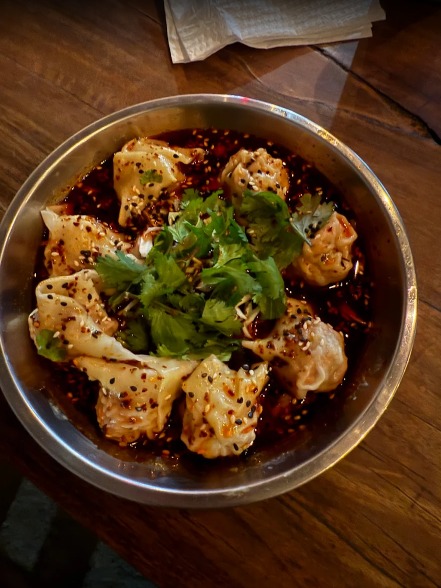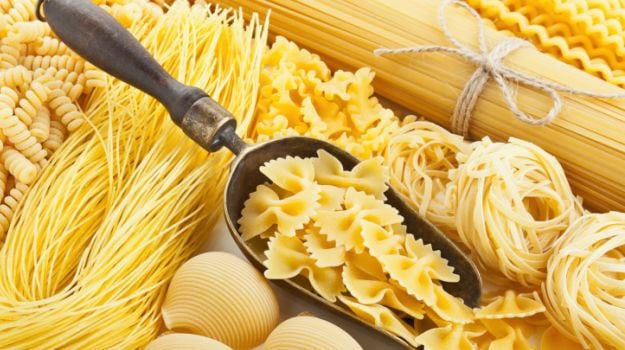
Pasta Flour: What Does it Take?
Pasta is the staple food of Italian Cuisine with its first reference dating to 1154 AD in Sicily. Pasta, like noodles and couscous is made from semolina flour which comes from durum wheat. Durum wheat is high on both protein and gluten, and also is not very stretchy which is why it holds shape, stays firm and cooks well. Another by-product of grinding durum wheat is durum flour which is much finer in nature. Semolina flour is mixed with water and kneaded in vacuum to produce gorgeous dough. Then it's pushed through various moulds/machines to get the desired shape.(Make Your Own Fresh Pasta)
Durum wheat is slightly yellow in colour which is what gives pasta its yellow colour as well. However, you may have come across some coloured varieties as well which have been cooked using beetroot colour for red pasta, spinach colour for green or cuttlefish ink for black pasta.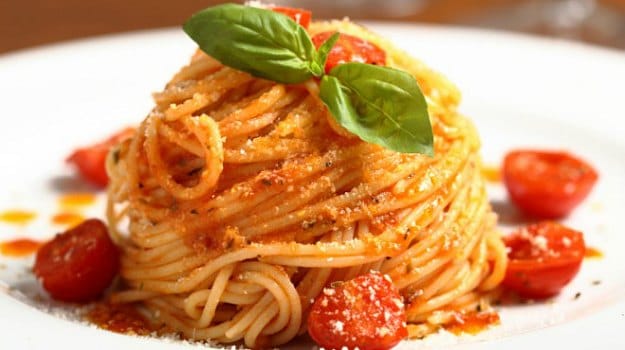
Gluten Free Pasta
Durum wheat which is used to make durum flour is made from a kind of grain that contains gluten. Gluten is a kind of complex network of proteins that develops when flour is mixed with water and kneaded thoroughly. It's what keeps the dough from turning into a crumble and helps it hold structure.(Making Fresh Pasta is a Rite of Passage)
So gluten free pasta is the kind that's made from a grain which contains no gluten. For example, wholegrain flour or a blend of rice and corn flour. A person would opt for gluten free pasta for one of two reasons: one, you're allergic to gluten which a lot of people these days are. And second, because it's a healthier alternative. It is low in fat and sodium which is 'heart-healthy' and can help to lower the risk of high cholesterol. So next time you're on a diet and order pasta, make sure it's gluten free!(Fresh Pasta, Made Simply)
Shape Up: The Different Types of Pasta
If you were to categorize the different types of pasta, you'd end up with an exhaustive list of over 600 types. But we don't want to bore you with the kind you've never eaten or probably even seen before and focus on a few common ones.(How to Cook the Perfect Pasta Puttanesca)
Pasta comes in different textures and shapes and so it needs to be cooked or boiled differently. Some like angel hair are very delicate and probably need only a few minutes to cook while shells might take a bit longer. Another thing about pasta you must know is that all kinds of pasta don't go with all kinds of sauces. Some like spaghetti need a smooth carbonara or wine-based consistent sauce while something like farfalle can be paired with a lumpy, not-so-consistent sauce. John Andler, executive chef at Franny's (United States) helps break this down: "Chunkier the sauce, shorter the pasta. Smoother the sauce, longer the pasta."(A Twist Adds Complexity to a Pasta Dish)
Different kinds of pasta also have different cooking times. It mostly depends on the surface-to-mass-ratio which is why something like angel hair which is thin and long needs only a few minutes to cook while those that are twisted or pinched have a harder texture and require more cooking time.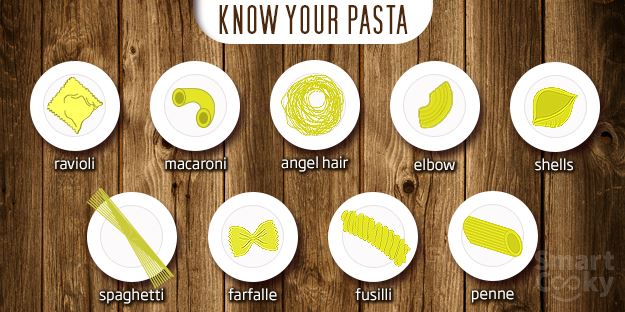 (How to Make the Most of Tomatoes)
(How to Make the Most of Tomatoes)
1. Angel Hair - Angel hair pasta is a thin and long kind of pasta which needs only about 6-7 minutes to cook in boiling water. It's a bit dainty which is why it can be paired with light, more soupy or dairy-based sauces. Angel hair is hollow at the centre which helps it absorb these consistent sauces. It's easy to wrap the pasta around your fork and gulp it down.
2. Farfalle - This shape of pasta resembles a bow tie and is slightly pinched in the centre. It's got a large surface are which is why rich tomato or cream sauce sticks really well to its surface. Farfalle takes around 10-12 minutes to cook in boiling water.
3. Fusilli - This is probably one of the most common shapes you'll find and it resembles a cork screw. It's made by wrapping thin strips of pasta around long skewers and then cutting them into multiple pieces. This type of pasta needs slightly longer to boil so leave it on for around 13-14 minutes.
4. Penne - A cylindrical pasta, this one is slightly hard and takes longer to cook but it pairs really well with chunky and cream-based sauces and vegetables. They cling to penne making it a real delight to eat.
5. Ravioli - Square shaped sheets of dough are stuffed with cheese, figs, meat or vegetables and boiled. Ravioli is usually cooked with light sauces because the pasta itself is so rich. It can also be served with some olive oil/butter/cream and seasoning.
6. Macaroni - Also known as elbow macaroni, this shape of pasta is usually used to make mac and cheese. But you can also mix it up with some vegetables and thick cheese sauce.
7. Shells - Shell pasta comes in many different sizes and the cook time depends solely on that. It's got a rough texture and if left unattended after boiling, it tends to stick together.
8. Spaghetti - An American favourite, spaghetti goes well with sauces that have oil or cream in them. It needs to be soft at all times so that you can slurp the long strands in all at once.
How to Boil Pasta
There's no one cook time that can guide you through this process, but there are a few basics you need to follow.
1. Take ample water in a large pot to boil pasta. If you take lesser water, the pasta tends to stick together.
2. When the water starts boiling, add the pasta, a pinch of salt and lower the flame so that the bubbles are small (should still be boiling though). An aggressive, rolling boil will break more delicate pasta such as ravioli or tortellini.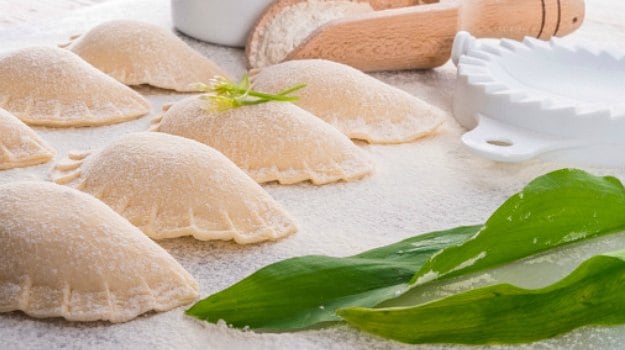
3. Don't boil pasta in a covered pot, as it will quickly overflow. Just leave your wooden spoon in the pot to prevent spillovers.
4. Never put pasta in a pot that isn't boiling, as this will only leave you with a gooey, overdone noodle.
5. It's never a good idea to boil two different varieties of pasta together unless they're similar in size and shape, due to varied cooking times.
6. Test the pasta by breaking in with your fingers. A white line in the centre means it needs a little more time.7. Drain the pasta and shock with ice-cold water so that it stops cooking. Toss it with a few drops of olive oil to keep the pieces from sticking to each other.
8. Get the pasta sauce on the pasta immediately after you drain it. The noodles cool down fast and start sticking to each other without a sauce to keep them apart.
Chef Tip - Pasta should be cooked "al dente" which translates from Italian as "to the tooth". This means it should be cooked through but have a firm bite and not be squishy. 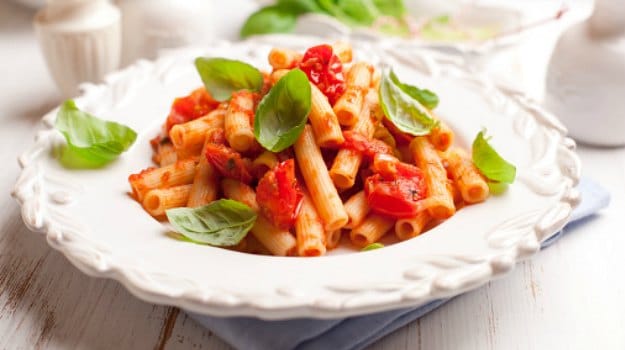
Is Pasta Healthy?
Yes, pasta proves to be a healthy option when basic ingredients are swapped with nutritive ones. The answer to the question 'Is pasta healthy?' is YES and NO. It depends on the way the pasta is made and served. It is a good source of carbohydrates and proteins. Both the nutrients tend to fuel up your body by providing energy that is released slowly overtime making it popular among the athletes. In fact, one cup of cooked spaghetti provides about 200 calories, 40 grams of carbs, less than one gram of total fat and no cholesterol! Pasta when combined with nutrient-dense food partners such as fibre-filled vegetables and beans, heart healthy fish and protein packed cheese, poultry and lean meats, proves to be a perfect foundation for healthy, nutritious and satisfying meal. Such meals needn't be guilty pleasures.
You can however, switch to whole wheat pasta or gluten free pasta for a healthier option.

